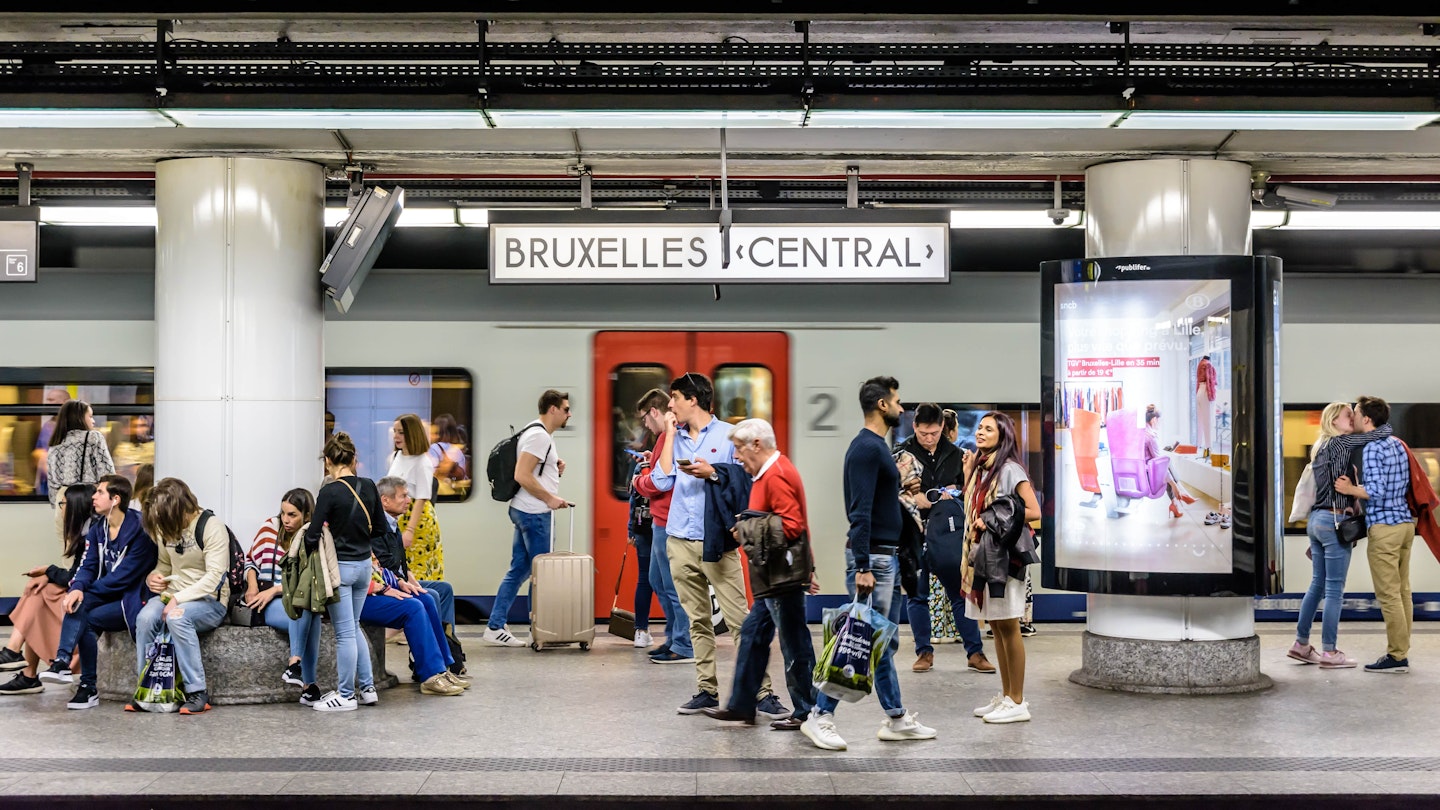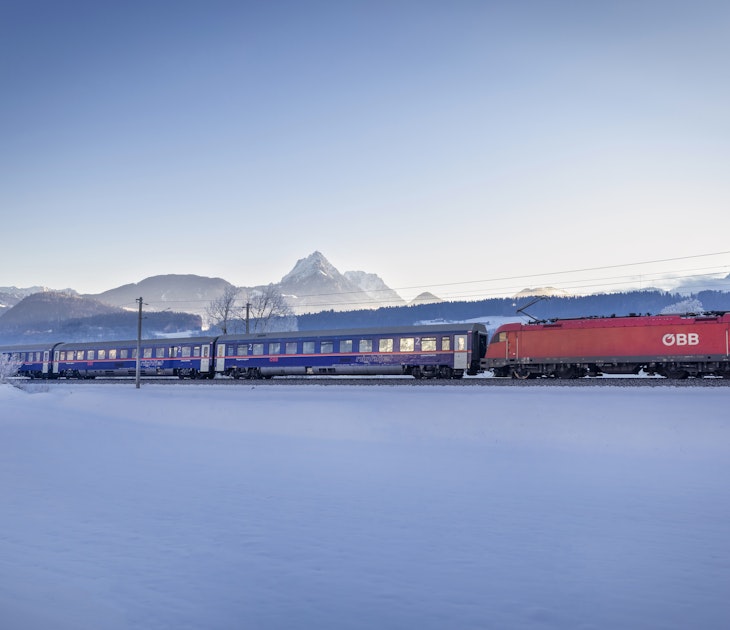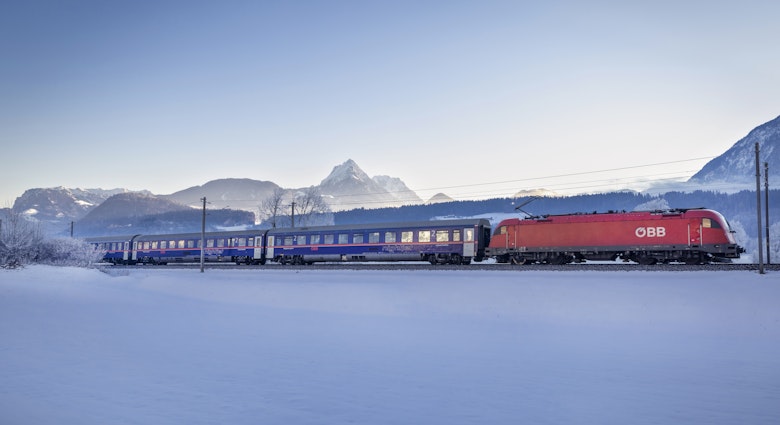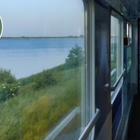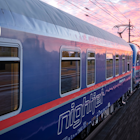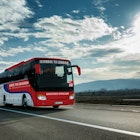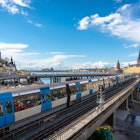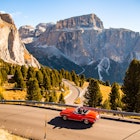While its capital Brussels and the canals of Bruges are major tourist magnets, the rest of this small but diverse country undeservedly goes largely unnoticed.
When traveling, its humble size is undoubtedly an advantage – getting from one place to another is easy, affordable, and quick. Here’s our guide on how to explore Belgium in its entirety, from the dunes at the coast to the Ardennes’ rolling hills.
Comfortably criss-cross Belgium by train
As the cradle of train travel in Europe – the first train to ever depart on mainland Europe did so from Brussels to Mechelen in 1835 – it comes as no surprise that Belgium is best explored on the rails. Thanks to a close-knit railway network that even includes smaller coastal and rural towns such as Knokke and Dinant, every corner is within reach in a short amount of time. The fact that the longest stretch of track is only 280km (174 mi) speaks for itself, and if you take Brussels as a starting point, no destination is more than two hours away.
How and where to buy tickets
Trains run frequently and are operated by SNCB/NMBS. Tickets can be purchased over the counter at stations and at vending machines (keep an eye out for the train stations in Antwerp and Liege, both architectural marvels) and, even more conveniently, via the website or app, for which you need a credit card or Paypal.
As prices are fixed, it doesn’t matter when you buy your ticket – great for those who prefer to travel spontaneously. Tickets are half price on weekends and if traveling with a friend, you get two for the price of one until 31 August 2022 with the duo ticket. Another money-saving option is the 10-journey rail pass (€87/$92 for 10 single rides) that can be used for multiple people. The SNCB app lets you check the real-time departure and arrival times, train occupancy, and any kind of disturbances – do watch out for strikes. Pack a picnic if you fancy a snack en route as there are no restaurant cars. Large pets and bicycles are welcome along for a small additional fee.

Discover the Belgian shores with its panoramic coastal tram
Belgium’s flat, sandy coastline, dotted with small towns, features the longest tramway in the world: De Kusttram. Since 1885, its 67km-long (41.6 mi) tracks connect De Panne on the French border with Knokke and its beautiful nature reserve near the Netherlands. With 68 stops, the coastal tram encourages you to hop on and off and go exploring, for example in Ostend, where Marvin Gaye wrote the iconic Sexual Healing. A day pass for the scenic ride is available for €7.50 (US$8.20).
Road-trip Belgium by car or motorcycle for maximum freedom
If you want complete independence, renting a car is the way to go. All major agencies (Sixt, Hertz, Europcar, etc) have offices all over Belgium but prices have risen substantially due to the pandemic and the war in Ukraine. Intercity travel is often faster by train, as traffic jams on Belgian highways can be severe and not only during rush hours. Finding a parking spot in Brussels neighborhood Ixelles, for example, can turn nightmarish, especially in the evenings.
If you cruise a Belgian highway at night, you might be surprised by its brightness – the entire motorway system lights up at dusk, using over two million light bulbs. There are no tolls on Belgian roads but speeding tickets are pricey. Another thing to watch out for is the signage, which will be in Flemish or French depending on the region. Sometimes, city names don’t share any similarities (such as Mons/Bergen), leaving a lot of room for missed exits.
While in Belgium cars are mainly used to get from A to B, the Belgian Ardennes in the country’s southeast with its valleys, rivers, and forests have quite a few scenic drives on offer. The area is especially popular among motorcycle aficionados and clubs. Two-wheelers can generally be hired from April through October, and to rent any kind of vehicle you need to be over 21 years old, have a valid license for the relevant vehicle, and own a credit card.

Pedal the heartland of cycling for a slow travel experience
In Belgium, the home country of legendary cyclist Eddy Merckx, cycling is a national sport. Flanders is the heartland of cycling, and during the Tour of Flanders and the Tour de France, pubs will be filled with avid followers glued to the screens.
The country prides itself on a considerable network of long-distance cycling routes. In Flanders alone, it comprises 13,000 km (8078 mi). The paths are visibly marked, safe, often car-free, and full of families as well as amateur teams. It’s a great way to discover Belgium when you’re not in a hurry as it gives you the chance to mix with the locals when stopping at breweries and restaurants along the way.
In an attempt to give touristic cycling a push, the Flemish authorities recently added nine thematic cycling routes to the network – the Coastal route leads along the seaside, the Scheldt route follows the riverbanks, and the 14-18 Western Front Route is perfect for history buffs. A good option for bike rental is Blue-bike, which is present at 60 train stations.
Why a car is still my favorite way to travel
I just love the flexibility of traveling by car, especially as someone who enjoys leaving the main roads to aimlessly explore an area. If you want to go hiking in the High Fens nature reserve or enjoy the panoramic view of the Giant’s Tomb, a car is helpful.
My favorite scenic drive is the route between Dinant and Namur, squeezed in between the river on one side and cliffs on the other. Car sharing company Green Mobility provides electric cars for day trips for about €60 (US$65) – it’s ecological and, with rising fuel prices, makes sense financially.
Accessible travel in Belgium
Travelers with reduced mobility should not encounter many problems in Belgium. Belgian Rail offers assistance when boarding or disembarking in 132 stations, a service that can be booked in advance free of charge. In 2013, Visit Flanders won two awards for accessible travel, and Leuven was recently mentioned at the EU Access City Awards for mainstreaming accessibility. In Wallonia, pay attention to the Access-i logo, which rates the practicality of a hotel, tour, event, or site. For more information, see Lonely Planet's Accessible Travel Resources page.
